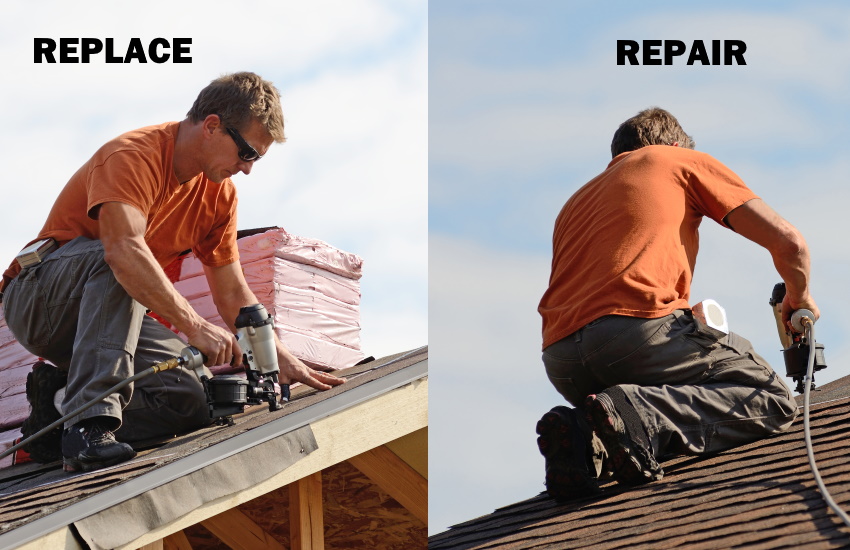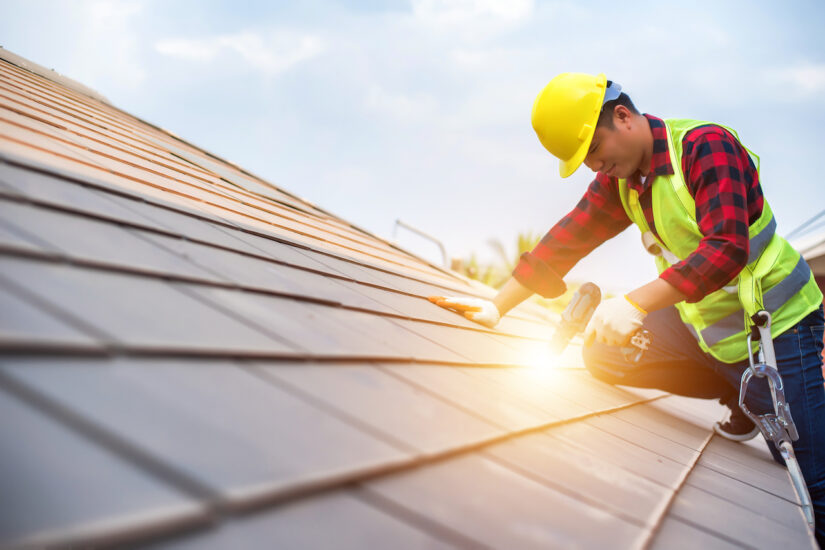Roof Repair Oahu: Professional Roof Repair Works for Lasting Protection
Wiki Article
Recognizing the Different Kinds Of Roofing Systems: A Comprehensive Guide for Homeowners
In the realm of homeownership, picking the appropriate roof style is a decision that brings considerable ramifications for both performance and aesthetic charm. With a variety of choices-- ranging from the conventional gable to the contemporary flat-- each type presents unique advantages and obstacles that need to straighten with the home owner's details demands and ecological factors to consider. Understanding these differences not just help in making an educated choice but additionally affects long-lasting maintenance and power effectiveness. As we check out the complexities of various roof covering kinds, it comes to be noticeable that one size does not fit all; the appropriate option might surprise you.Saddleback Roof
Saddleback roofs, identified by their triangular shape, are amongst one of the most prominent roofing styles as a result of their simplicity and performance in shedding water and snow. This style includes two sloping sides that satisfy at a ridge, enabling effective water drainage and reducing the threat of water accumulation. The steep pitch generally associated with saddleback roofs enhances their ability to manage hefty precipitation, making them appropriate for different environments.Along with their useful advantages, gable roof coverings provide aesthetic convenience. They can be adjusted to various architectural styles, from standard to modern-day homes. The layout can additionally suit extra functions such as dormer home windows, which enhance all-natural light and air flow in the attic room space.
Additionally, saddleback roofs offer sufficient area for insulation, adding to power performance. Homeowners can select from a range of roof products, including asphalt roof shingles, steel, and ceramic tiles, additionally boosting modification alternatives.
Regardless of their benefits, saddleback roofs might need extra support in areas prone to high winds or heavy snowfall. Overall, the gable roofing system remains a favored selection because of its blend of functionality, sturdiness, and visual appeal.
Flat Roofs
Level roofings are commonly acknowledged for their minimalist design and practical applications, specifically in business and industrial setups (oahu roofing). These roofings feature a nearly straight or horizontal surface, which enables simple building and versatile room use. While they may do not have the visual appeal of pitched roof coverings, level roofing systems offer countless advantages, specifically in metropolitan environments where taking full advantage of space is criticalAmong the key advantages of flat roofings is their accessibility. Homeowners can make use of the roofing space for numerous purposes, such as roof gardens, balconies, or solar panel setups. Additionally, level roofs are normally much more cost-efficient to maintain and set up contrasted to their sloped equivalents, as they require less products and labor.
Usual products made use of for level roof coverings consist of built-up roof covering (BUR), changed asphalt, and single-ply membrane layers, each offering distinctive advantages. On the whole, level roofs serve as a functional and versatile option for numerous homeowners and companies alike.
Hip Roof Coverings
Hip roofs are characterized by their sloped sides that converge on top, creating a ridge. This layout stands out from gable roofings, as all 4 sides of a hip roofing system slope downwards toward the wall surfaces, giving a much more steady structure. The angle of the inclines can differ, enabling flexibility in architectural visual appeals and functionality.Among the main advantages of hip roofs is their capacity to stand up to heavy winds and adverse climate problems. The sloped surfaces make it possible for much better water drainage, lowering the danger of leaks and water damage. Additionally, hip roofs supply boosted attic room, which can be utilized for storage space and even exchanged habitable locations.
Nevertheless, constructing a hip roof covering can be much more intricate and expensive than simpler roofing types, such as saddleback roofs. The extra product and labor associated with developing the slopes and making sure proper architectural honesty can result in greater expenses. In spite of these drawbacks, numerous home owners favor hip roofs for their toughness, aesthetic charm, and possibility for energy effectiveness.
Mansard Roof Coverings
Mansard roofings, usually identified by their distinct four-sided style, attribute two inclines on each side, with the reduced incline being steeper than the upper. This architectural style, originating from France in the 17th century, is not just cosmetically appealing however practical, as it takes full advantage of the useful space in the upper floorings of a structure. The high reduced slope allows for more headroom, making it an excellent choice for attics or lofts, which can be exchanged living rooms.Mansard roof coverings are characterized by their versatility, fitting different building styles, from standard to modern-day. They can be created with various products, consisting of asphalt tiles, slate, or steel, giving home owners with a series of options to suit their choices and spending plans. In addition, the layout enables the assimilation of dormer home windows, improving natural light and ventilation in the upper degrees.
Nonetheless, it is vital to take i thought about this into consideration the possible disadvantages. Mansard roofings may require even more upkeep because of the complexity of their design, and their look at this now steep inclines can be testing for snow and rain runoff. Overall, mansard roof coverings incorporate sophistication with functionality, making them a popular selection amongst property owners seeking distinctive architectural attributes.
Dropped Roofs
As homeowners significantly look for simplicity and capability in their architectural designs, lost roofing systems have arised as a prominent choice. Identified by a single sloping aircraft, a shed roofing system presents a minimal aesthetic that enhances various home designs, from contemporary to rustic.One of the key advantages of a shed roof covering is its straightforward building, which often equates to decrease labor and material expenses. This layout allows for efficient water drain, decreasing the threat of leaks and water damage. Furthermore, the upright slope offers adequate room for skylights, enhancing natural light within the inside.
Lost roofs likewise use convenience in terms of usage. They can be efficiently incorporated right into enhancements, garages, or exterior structures like pavilions and sheds. Moreover, this roof covering design can suit various roofing materials, including metal, asphalt roof shingles, and even eco-friendly roofings, straightening with environmentally friendly efforts.
Nevertheless, it is vital to take into consideration local environment problems, as hefty snow tons may necessitate changes to the roofing system's angle or framework. In general, lost roofings present a practical and aesthetically pleasing option for homeowners looking to take full advantage of capability without endangering design.
Final Thought


Gable roofs, defined by their triangular form, are amongst the most popular roof designs due to their simplicity and efficiency in losing water and snow. oahu roofing. The high pitch typically connected with gable roof coverings enhances their capability to take care of heavy precipitation, making them appropriate for numerous environments
While they may lack the aesthetic allure of pitched roofs, flat roofing systems use countless advantages, especially in metropolitan atmospheres where maximizing space is important.

Report this wiki page